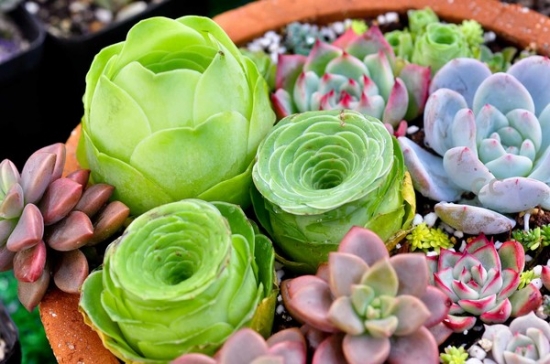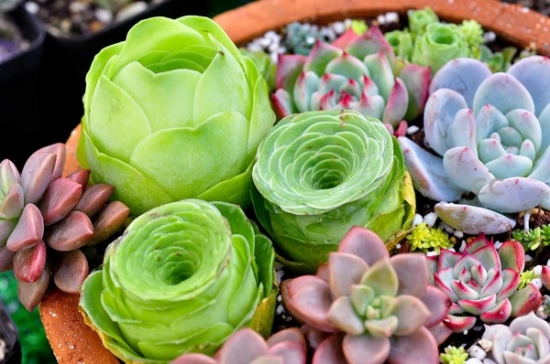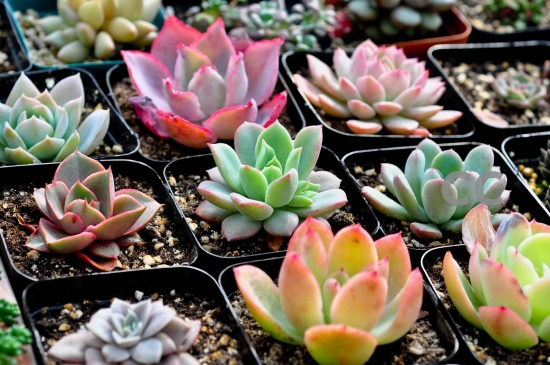How to cultivate succulent plants Classification of succulent plants and matters needing attention in succulent plant culture
Succulent plants have fascinated many people because of their natural cuteness, and many flower lovers can't even stop or stop. So many adjectives "natural stupidity", "pollution-free" and "cure system" are our common descriptions of succulent plants. Today, I would like to introduce to you the species of succulent plants and how to raise succulent plants.

According to the different parts of water storage tissue in succulent plants, succulent plants can be divided into three types:
one。 Leafy succulent plants:
The leaves are highly fleshy, while the succulent degree of stems is low, and some kinds of stems have a certain degree of Lignification. Such as Amygdaceae, crassulaceae, Liliaceae and tequila.
two。 Succulent plants with stems:
The water storage tissue of plants is mainly distributed in the stem, some species have segmented stems, angled and verrucous processes, and a few species have slightly fleshy leaves, but generally fall early. Represented by succulent plants of Euphorbiaceae and Ramoaceae.
three。 Stem-like succulent plants:
The fleshy part of the plant is concentrated at the base of the stem, and this part is particularly inflated. The shape of the expanded stem base varies due to different species, but it is mainly spherical or nearly spherical, sometimes semi-buried underground, without nodes, edges, and verrucous processes. There are leaves or leaves that fall early, and the leaves grow directly from the top of the inflated stem base or from slender branches that are suddenly thinner and almost fleshy, and sometimes such slender branches also fall early. It is represented by succulent plants of Dioscorea zingiberensis, Cucurbitaceae and Passionaceae.
- Prev

Detailed steps for succulent plants to change pots, maintenance of succulent plants after changing pots, how to water succulent plants
Whether they are newly bought or succulent plants that have been raised for more than a few years, we all need to change their pots in order to make them grow better, so we can refer to the detailed steps of changing succulent plants below. And succulent plants after changing pots.
- Next

How to raise a lot of succulent plants? how to deal with frostbite? talk about the methods of succulent plants in winter.
Cold winter will make the leaves of succulent plants appear translucent, or let the leaves fall and soften for no reason, when your succulent plants may not survive the winter and frostbite, so what about succulent plants frostbite?
Related
- Wuhan Hospital Iron Tree Blooming Result Was Instantly Frightened by the Gardener Master
- Which variety of camellia is the most fragrant and best? Which one do you like best?
- What is the small blue coat, the breeding methods and matters needing attention of the succulent plant
- Dormancy time and maintenance management of succulent plants during dormancy
- Minas succulent how to raise, Minas succulent plant pictures
- What are the varieties of winter succulent plants
- How to raise succulent plants in twelve rolls? let's take a look at some experience of breeding twelve rolls.
- Attention should be paid to water control for succulent plants during dormant period (winter and summer)
- Watering experience of twelve rolls of succulent plants
- Techniques for fertilizing succulent plants. An article will let you know how to fertilize succulent plants.

